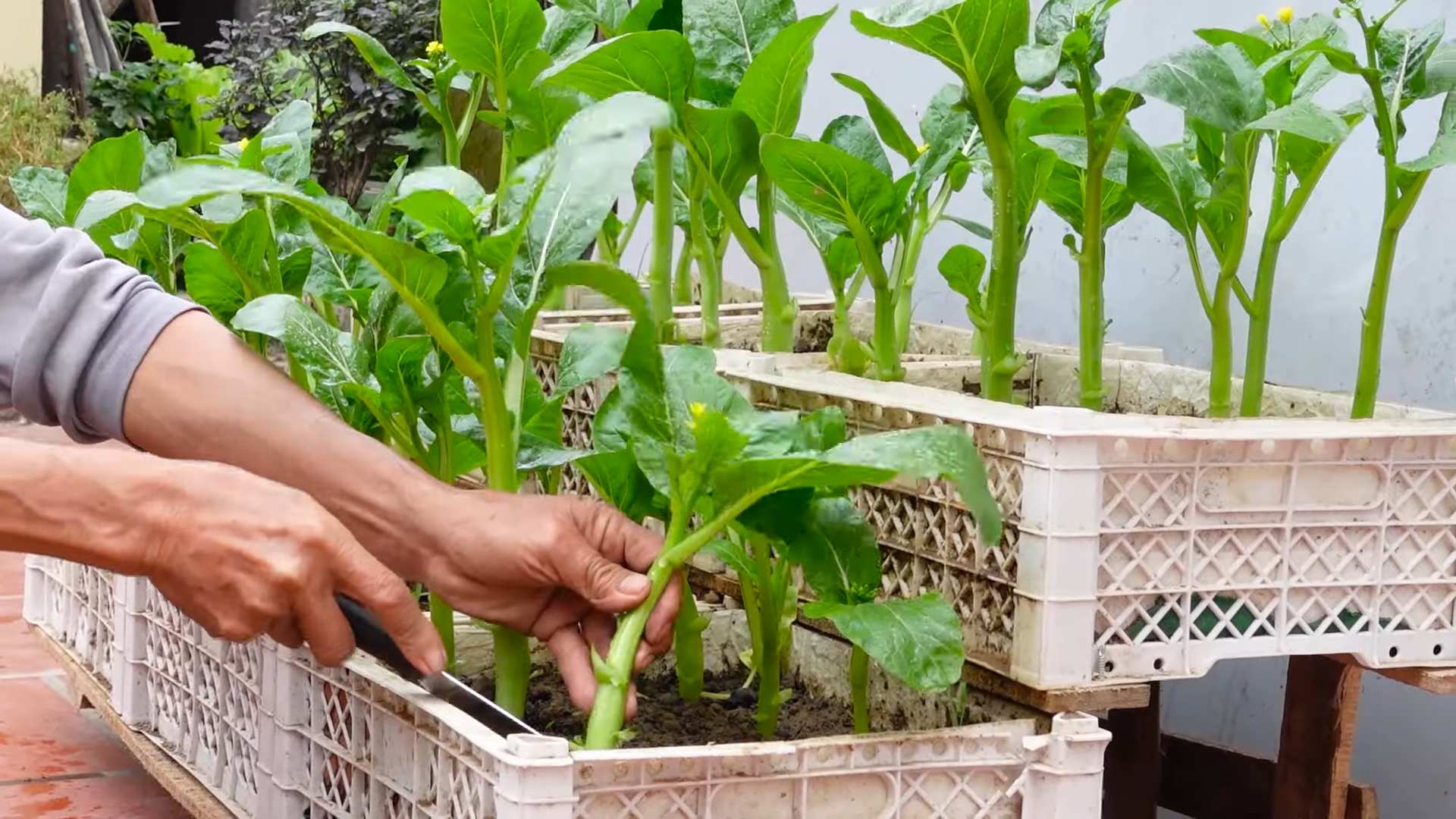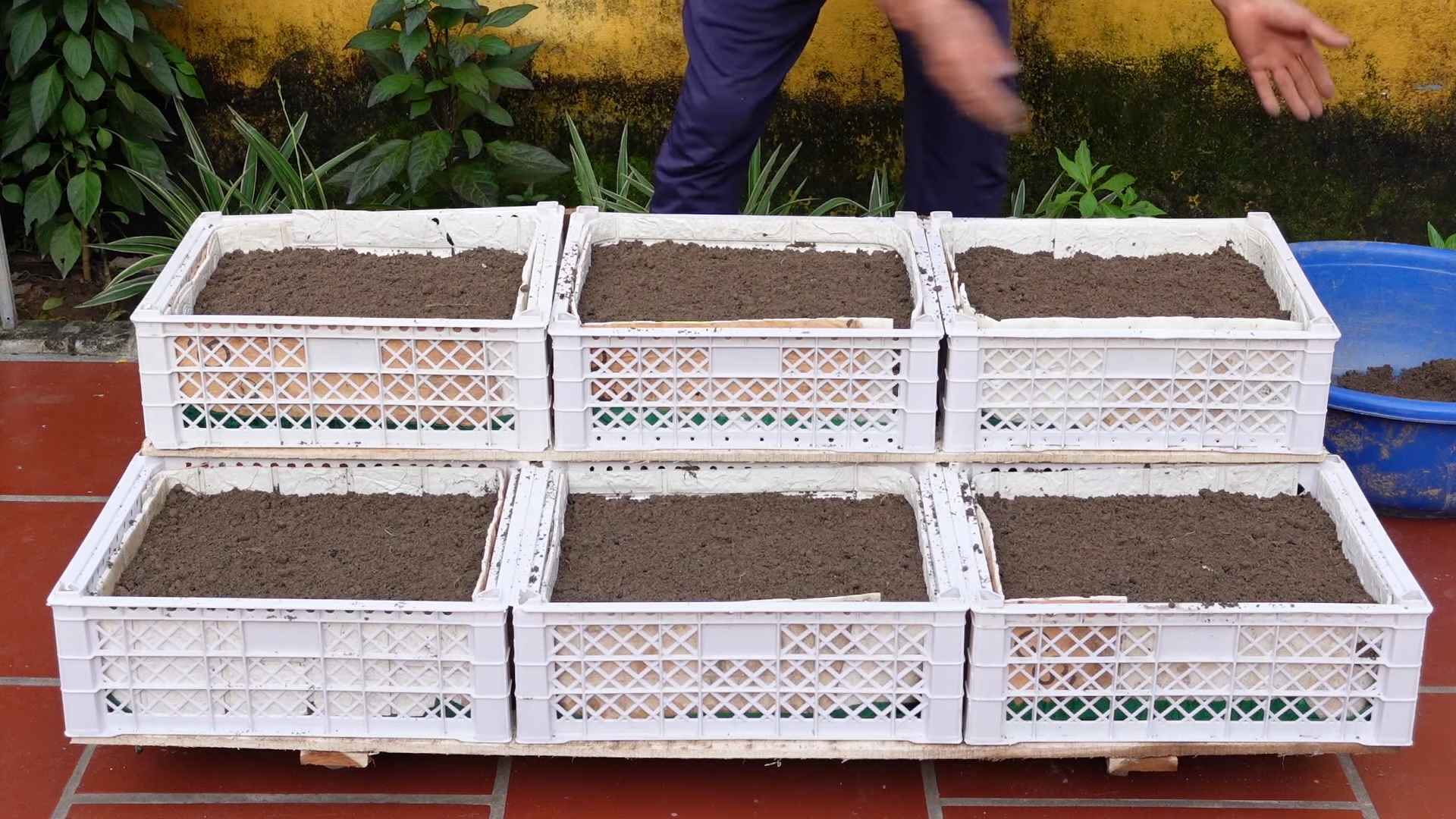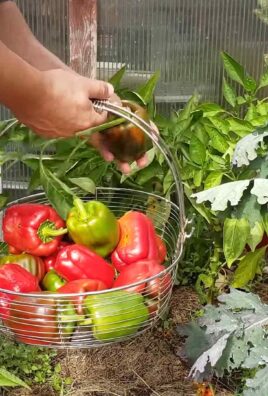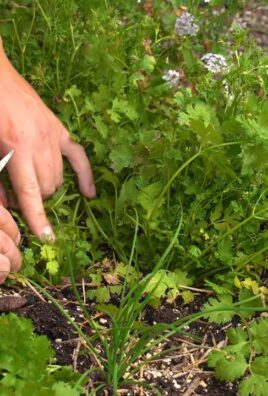Growing Vegetables at Home can feel like a daunting task, especially if you’re new to the world of gardening. But what if I told you that cultivating your own delicious, fresh produce is easier than you think? Imagine stepping outside your back door and picking ripe tomatoes, crisp lettuce, or fragrant herbs, all grown with your own two hands. That’s the magic of home gardening!
For centuries, people have cultivated their own food, from ancient Roman kitchen gardens to the victory gardens of World War II. This tradition connects us to the earth and provides a sense of self-sufficiency. But in today’s fast-paced world, many of us have lost touch with this vital skill. We rely on grocery stores for our produce, often unaware of where it comes from or what chemicals it may contain.
That’s where this DIY guide comes in! I’m here to share some simple yet effective tricks and hacks that will transform your backyard, balcony, or even windowsill into a thriving vegetable garden. Whether you’re a seasoned gardener or a complete beginner, you’ll find valuable tips to help you succeed. Growing Vegetables at Home not only provides you with fresh, healthy food, but it’s also a rewarding and therapeutic hobby. So, let’s get our hands dirty and start growing!

Growing Your Own Delicious Veggies: A Beginner’s Guide
Hey there, fellow gardening enthusiasts! Ever dreamt of stepping into your backyard and picking fresh, flavorful vegetables for dinner? Well, dream no more! Growing your own veggies is easier than you might think, and I’m here to guide you through the process, step-by-step. Get ready to get your hands dirty and enjoy the incredible satisfaction of harvesting your own homegrown goodness!
Choosing Your Veggies and Location
Before we dive into the nitty-gritty, let’s figure out what you want to grow and where you’re going to grow it. This is a crucial first step!
* **Consider your climate:** Different vegetables thrive in different climates. Research which veggies grow well in your region. Your local garden center is a great resource for this!
* **Think about your space:** Do you have a sprawling backyard or just a sunny balcony? This will determine how much you can grow and whether you’ll need containers.
* **Choose what you love to eat:** This might seem obvious, but it’s important! There’s no point in growing something you don’t enjoy.
* **Sunlight is key:** Most vegetables need at least 6 hours of direct sunlight per day. Observe your yard throughout the day to identify the sunniest spots.
* **Soil matters:** Healthy soil is the foundation of a successful garden. If your soil is poor, you can amend it with compost or use raised beds with fresh soil.
* **Water access:** Make sure your garden is easily accessible to a water source. Lugging heavy watering cans across the yard gets old fast!
Some easy-to-grow vegetables for beginners include:
* Lettuce
* Radishes
* Spinach
* Tomatoes (especially cherry tomatoes)
* Zucchini
* Peppers
* Beans
* Cucumbers
Preparing Your Garden Bed or Containers
Now that you’ve chosen your veggies and location, it’s time to prepare the ground (or your containers!).
* **Clear the area:** Remove any grass, weeds, rocks, or debris from your garden bed.
* **Test your soil:** A soil test will tell you the pH level and nutrient content of your soil. You can purchase a soil test kit at most garden centers.
* **Amend your soil:** Based on your soil test results, you may need to add amendments like compost, manure, or fertilizer to improve the soil’s fertility and drainage.
* **Till or dig:** Loosen the soil to a depth of at least 12 inches. This will allow the roots of your vegetables to grow easily.
* **Create raised beds (optional):** Raised beds are a great option if you have poor soil or drainage issues. They also make gardening easier on your back!
* **Choose the right containers:** If you’re growing in containers, make sure they’re large enough for the vegetables you’re growing and have drainage holes.
* **Use potting mix:** Don’t use garden soil in containers. It’s too heavy and doesn’t drain well. Use a high-quality potting mix instead.
Planting Your Vegetables
Alright, the fun part! Time to get those seeds or seedlings in the ground.
1. **Check the planting instructions:** Each vegetable has specific planting requirements, such as planting depth, spacing, and timing. Read the seed packet or plant label carefully.
2. **Start seeds indoors (optional):** Some vegetables, like tomatoes and peppers, benefit from being started indoors a few weeks before the last frost. This gives them a head start on the growing season.
3. **Harden off seedlings:** If you started your seedlings indoors, you’ll need to harden them off before transplanting them into the garden. This means gradually exposing them to outdoor conditions over a period of a week or two.
4. **Plant seeds or seedlings:** Dig a hole that’s the appropriate depth for the seed or seedling. Gently place the seed or seedling in the hole and cover it with soil.
5. **Water thoroughly:** Water the newly planted seeds or seedlings well to help them establish their roots.
6. **Mulch:** Apply a layer of mulch around your plants to help retain moisture, suppress weeds, and regulate soil temperature. Straw, wood chips, or shredded leaves are good options.
Caring for Your Growing Vegetables
Planting is just the beginning! Now you need to provide your vegetables with the care they need to thrive.
* **Water regularly:** Water your vegetables deeply and regularly, especially during dry periods. The best time to water is early in the morning.
* **Fertilize:** Fertilize your vegetables every few weeks with a balanced fertilizer. Follow the instructions on the fertilizer label.
* **Weed regularly:** Weeds compete with your vegetables for water and nutrients. Remove them regularly by hand or with a hoe.
* **Pest control:** Keep an eye out for pests and diseases. There are many organic pest control methods you can use, such as insecticidal soap or neem oil.
* **Support climbing plants:** Vegetables like tomatoes, cucumbers, and beans need support to grow properly. Use stakes, trellises, or cages.
* **Prune:** Some vegetables, like tomatoes, benefit from pruning. Pruning helps to improve air circulation and fruit production.
Harvesting Your Vegetables
The moment you’ve been waiting for! Harvesting your own homegrown vegetables is incredibly rewarding.
* **Know when to harvest:** Each vegetable has a specific time when it’s ready to be harvested. Research the optimal harvesting time for each vegetable you’re growing.
* **Harvest gently:** Handle your vegetables with care to avoid bruising or damaging them.
* **Harvest regularly:** Harvesting vegetables regularly encourages them to produce more.
* **Store properly:** Store your harvested vegetables in the refrigerator or freezer to keep them fresh.
Specific Vegetable Growing Tips
Let’s dive into some specific tips for growing some popular vegetables:
Tomatoes
* **Choose a sunny spot:** Tomatoes need at least 6-8 hours of direct sunlight per day.
* **Use well-drained soil:** Tomatoes don’t like soggy soil.
* **Support your plants:** Use stakes, cages, or trellises to support your tomato plants.
* **Prune suckers:** Remove the suckers that grow between the main stem and the branches.
* **Water deeply and regularly:** Water your tomato plants deeply and regularly, especially during dry periods.
* **Fertilize regularly:** Fertilize your tomato plants every few weeks with a balanced fertilizer.
* **Watch out for pests and diseases:** Tomatoes are susceptible to a variety of pests and diseases. Keep an eye out for problems and take action quickly.
* **Harvest when ripe:** Tomatoes are ripe when they’re fully colored and slightly soft to the touch.
Lettuce
* **Choose a sunny or partially shaded spot:** Lettuce can tolerate some shade, especially in hot weather.
* **Use well-drained soil:** Lettuce doesn’t like soggy soil.
* **Plant seeds or seedlings:** You can start lettuce from seed or purchase seedlings from a garden center.
* **Water regularly:** Water your lettuce regularly, especially during dry periods.
* **Harvest regularly:** Harvest lettuce leaves as needed. This will encourage the plant to produce more leaves.
* **Succession planting:** Plant lettuce every few weeks to ensure a continuous harvest.
Zucchini
* **Choose a sunny spot:** Zucchini needs at least 6 hours of direct sunlight per day.
* **Use well-drained soil:** Zucchini doesn’t like soggy soil.
* **Plant seeds or seedlings:** You can start zucchini from seed or purchase seedlings from a garden center.
* **Water regularly:** Water your zucchini regularly, especially during dry periods.
* **Fertilize regularly:** Fertilize your zucchini every few weeks with a balanced fertilizer.
* **Watch out for squash vine borers:** Squash vine borers are a common pest of zucchini. Check your plants regularly for signs of infestation.
* **Harvest when young:** Zucchini is best harvested when it’s young and tender.
Peppers
* **Choose a sunny spot:** Peppers need at least 6-8 hours of direct sunlight per day.
* **Use well-drained soil:** Peppers don’t like soggy soil.
* **Start seeds indoors:** Peppers need a long growing season, so it’s best to start them indoors a few weeks before the last frost.
* **Harden off seedlings:** Harden off your pepper seedlings before transplanting them into the garden.
* **Water deeply and regularly:** Water your pepper plants deeply and regularly, especially during dry periods.
* **Fertilize regularly:** Fertilize your pepper plants every few weeks with a balanced fertilizer.
* **Support your plants:** Use stakes or cages to support your pepper plants.
* **Harvest when ripe:** Peppers are ripe when they’re fully colored and slightly soft to the touch.
Troubleshooting Common Gardening Problems
Even with the best planning, you might encounter some challenges along the way. Here are a few common problems

Conclusion
So, there you have it! Embracing the world of home gardening and growing vegetables at home is more than just a trend; it’s a rewarding journey that connects you with nature, provides fresh, healthy food, and empowers you to take control of your food source. We’ve explored the simplicity and satisfaction of cultivating your own produce, from selecting the right space and soil to nurturing your plants and harvesting your bounty.
Why is this DIY approach a must-try? Because it’s about more than just saving money (though that’s a definite perk!). It’s about knowing exactly what goes into your food, avoiding harmful pesticides and herbicides, and enjoying the unparalleled flavor of freshly picked vegetables. Imagine the taste of a sun-ripened tomato, still warm from the vine, or the crispness of a lettuce leaf harvested just moments before it graces your salad. These are experiences you simply can’t replicate with store-bought produce.
But the benefits extend beyond the culinary. Gardening is a fantastic stress reliever, a gentle form of exercise, and a wonderful way to connect with your family. It teaches patience, observation, and an appreciation for the natural world. Plus, it’s incredibly satisfying to watch a tiny seed transform into a thriving plant that provides nourishment for you and your loved ones.
Ready to take your gardening to the next level? Consider these variations and suggestions:
* **Vertical Gardening:** If space is limited, explore vertical gardening techniques using trellises, hanging baskets, or stacked planters. This is a great way to maximize your yield in a small area.
* **Container Gardening:** Perfect for balconies, patios, or even indoor spaces, container gardening allows you to grow a wide variety of vegetables in pots and containers. Choose the right size container for the specific vegetable you’re growing.
* **Companion Planting:** Research companion planting to learn which vegetables thrive when planted together. For example, basil is said to improve the flavor of tomatoes and repel pests.
* **Succession Planting:** Extend your harvest season by planting crops in succession. Plant a new batch of seeds every few weeks to ensure a continuous supply of fresh vegetables.
* **Experiment with Different Varieties:** Don’t be afraid to try different varieties of your favorite vegetables. You might discover a new favorite! Heirloom varieties often offer unique flavors and textures.
Growing vegetables at home is an investment in your health, your well-being, and your connection to the earth. It’s a journey of discovery, learning, and growth. So, grab your gardening gloves, get your hands dirty, and experience the joy of harvesting your own fresh, delicious vegetables.
We’re confident that you’ll find this DIY trick incredibly rewarding. We encourage you to give it a try and share your experiences with us! Post photos of your garden, share your tips and tricks, and let us know what vegetables you’re growing. We can’t wait to see what you create! Happy gardening!
Frequently Asked Questions (FAQ)
What are the easiest vegetables to grow for beginners?
For beginners, some of the easiest vegetables to grow include lettuce, radishes, spinach, bush beans, zucchini, and cherry tomatoes. These vegetables are relatively low-maintenance and can tolerate a wider range of growing conditions. They also tend to mature quickly, providing a faster sense of accomplishment. Starting with these easy-to-grow options can build your confidence and encourage you to expand your gardening repertoire.
How much sunlight do vegetables need?
Most vegetables need at least 6-8 hours of direct sunlight per day to thrive. Sunlight is essential for photosynthesis, the process by which plants convert light energy into chemical energy for growth. Leafy greens like lettuce and spinach can tolerate slightly less sunlight, but fruiting vegetables like tomatoes, peppers, and cucumbers require ample sunlight to produce a good harvest. If you don’t have enough natural sunlight, you can supplement with grow lights.
What kind of soil is best for growing vegetables?
The best soil for growing vegetables is well-draining, fertile, and rich in organic matter. A loamy soil, which is a mixture of sand, silt, and clay, is ideal. You can improve your soil by adding compost, aged manure, or other organic amendments. These amendments will help to improve drainage, aeration, and nutrient content. It’s also a good idea to test your soil pH to ensure it’s within the optimal range for the vegetables you’re growing. Most vegetables prefer a slightly acidic soil pH of around 6.0 to 7.0.
How often should I water my vegetables?
The frequency of watering depends on several factors, including the type of vegetable, the weather, and the soil type. Generally, you should water your vegetables deeply and less frequently, rather than shallowly and more often. This encourages deep root growth, which makes plants more drought-tolerant. Check the soil moisture regularly by sticking your finger into the soil. If the top inch or two feels dry, it’s time to water. Avoid overwatering, as this can lead to root rot.
How do I deal with pests and diseases in my vegetable garden?
Prevention is key when it comes to pests and diseases. Start by choosing disease-resistant varieties of vegetables. Practice good garden hygiene by removing weeds and debris that can harbor pests and diseases. Encourage beneficial insects, such as ladybugs and lacewings, which prey on harmful pests. If you do encounter pests or diseases, try using organic control methods, such as insecticidal soap, neem oil, or Bacillus thuringiensis (Bt). Avoid using broad-spectrum pesticides, as these can harm beneficial insects as well.
Can I grow vegetables indoors?
Yes, you can grow vegetables indoors, especially with the right conditions. Leafy greens like lettuce, spinach, and kale are well-suited for indoor growing. Herbs like basil, mint, and parsley also thrive indoors. You’ll need a sunny window or grow lights to provide adequate light. Choose containers with drainage holes and use a good-quality potting mix. Water regularly and fertilize as needed.
How do I know when my vegetables are ready to harvest?
The best way to know when your vegetables are ready to harvest is to research the specific variety you’re growing. Generally, vegetables are ready to harvest when they reach their mature size and color. For example, tomatoes should be fully red and slightly soft to the touch. Cucumbers should be firm and green. Lettuce should be harvested when the leaves are large enough to eat. Harvesting vegetables at the right time will ensure the best flavor and texture.
What are some common mistakes to avoid when growing vegetables?
Some common mistakes to avoid when growing vegetables include:
* **Planting too early or too late:** Make sure to plant your vegetables at the right time of year for your climate.
* **Overcrowding plants:** Give your vegetables enough space to grow.
* **Not providing enough sunlight:** Most vegetables need at least 6-8 hours of direct sunlight per day.
* **Overwatering or underwatering:** Water your vegetables deeply and less frequently, rather than shallowly and more often.
* **Not fertilizing:** Vegetables need nutrients to grow. Fertilize regularly with a balanced fertilizer.
* **Ignoring pests and diseases:** Monitor your plants regularly for pests and diseases and take action promptly.
* **Not amending the soil:** Improve your soil by adding compost, aged manure, or other organic amendments.
By avoiding these common mistakes, you can increase your chances of success when growing vegetables at home.





Leave a Comment